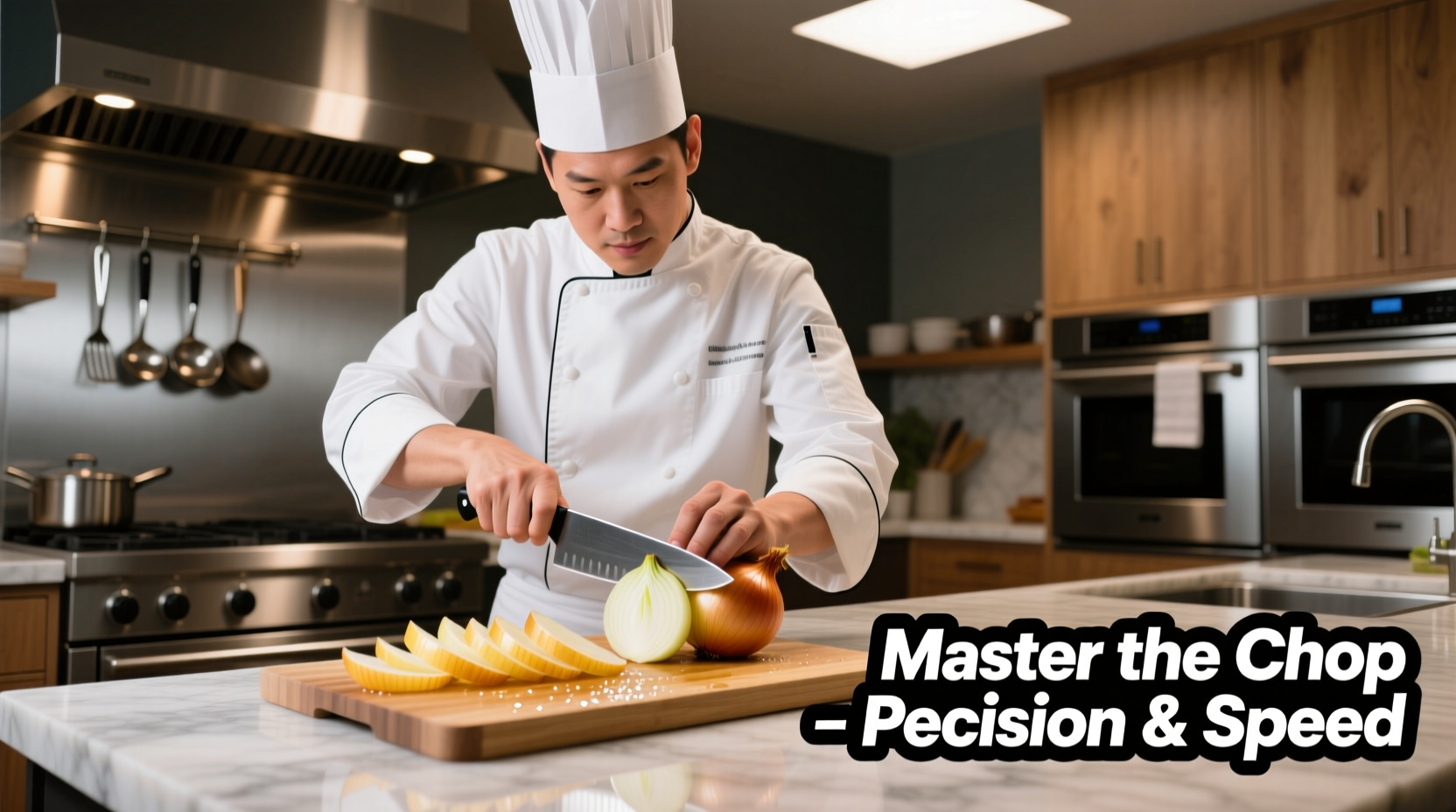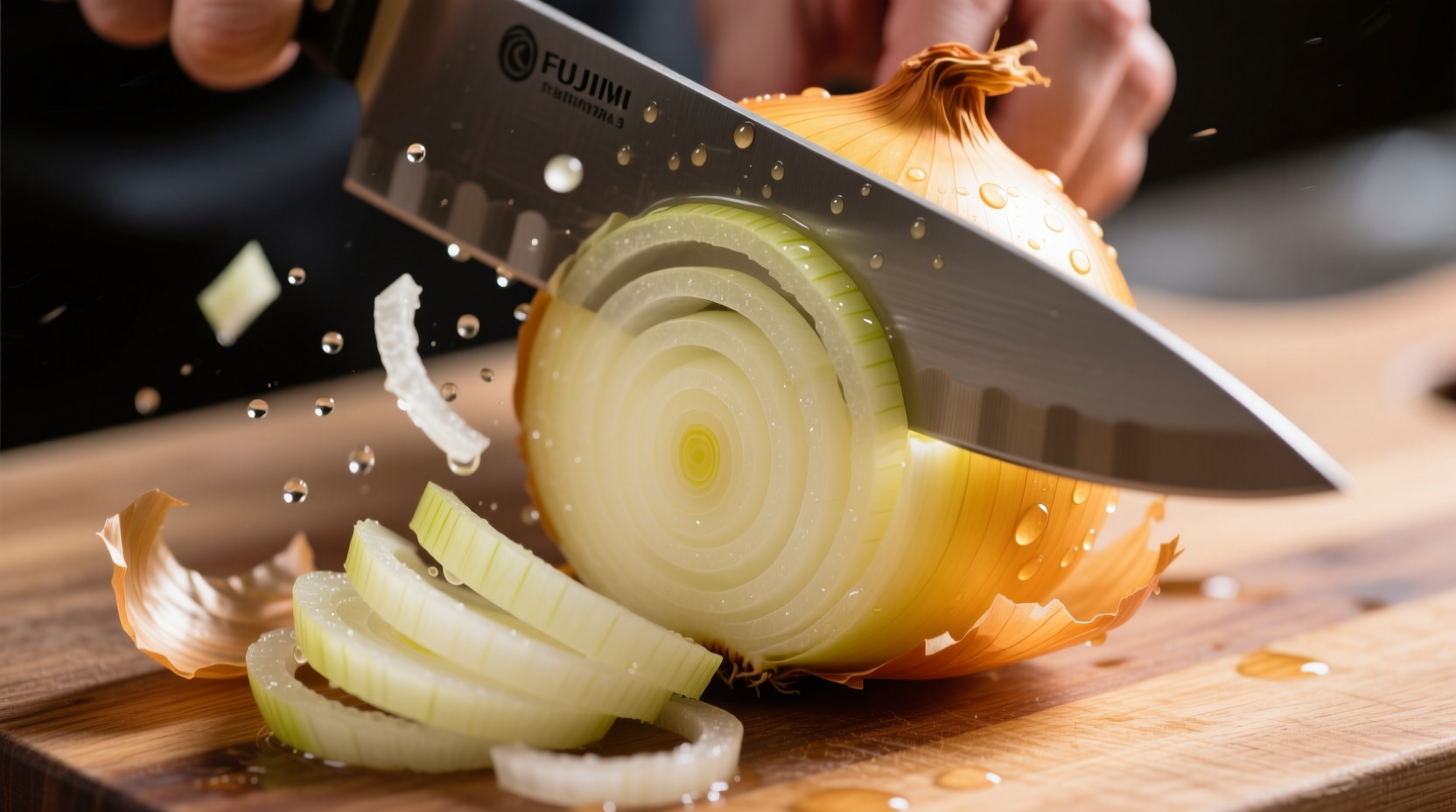The Science Behind Onion Chopping
When you cut an onion, you rupture its cells, releasing enzymes that react with sulfur compounds to form syn-propanethial-S-oxide—a volatile gas that irritates your eyes. Understanding this chemical reaction is the first step to chopping onions without tears. Professional chefs leverage this knowledge to develop techniques that minimize gas release while maintaining optimal flavor profiles.
Essential Tools for Precision Chopping
The right equipment makes all the difference in achieving consistent results. While many home cooks reach for the first knife they find, professional results require specific tools:
- 8-10 inch chef's knife: The curved blade allows for the rocking motion essential for efficient chopping
- Sharpness matters: A sharp knife causes less cell damage, reducing irritant release by up to 30% according to culinary research
- Stable cutting surface: A damp towel beneath your cutting board prevents slipping
- Optional but helpful: Onion goggles with proper ventilation (tested by the American Chemical Society)

Step-by-Step Perfect Onion Chop Technique
Follow this professional method for consistent, tear-free results:
- Preparation: Chill onions for 30 minutes before cutting—cold temperatures slow the chemical reaction
- Trim strategically: Cut off the stem end first (not the root), preserving more sulfur compounds in the root end
- Halve properly: Cut from pole to pole (stem to root), not equatorially, to minimize cell rupture
- Peel gently: Remove only the necessary outer layers to reduce exposure
- Position correctly: Place cut-side down on the board for stability
- Knife angle: Maintain a 15-20 degree angle for clean cuts with minimal cell damage
- Rocking motion: Use the knife's curve for efficient, consistent chopping
Onion Cut Types and Culinary Applications
Different dishes require specific onion preparations. Understanding these variations elevates your cooking:
| Cut Type | Dimensions | Best For | Flavor Release |
|---|---|---|---|
| Julienne | 1/8 inch strips | Stir-fries, garnishes | Moderate, even cooking |
| Medium Dice | 1/4 inch cubes | Sauces, soups, salsas | Optimal for flavor distribution |
| Minced | 1/8 inch or smaller | Dressings, meat mixtures | Maximum flavor release |
| Wedges | Quartered | Grilling, roasting | Controlled, gradual release |
Advanced Tear-Reduction Techniques
Professional kitchens employ several science-backed methods to minimize eye irritation:
- Water immersion method: Chop onions submerged in cold water to prevent gas from reaching your eyes (though this may slightly dilute flavor)
- Ventilation strategy: Work near a running fan or under a vent hood to direct gases away from your face
- Root retention: Leave the root end intact as long as possible—this contains the highest concentration of enzymes
- Specialized cutting boards: Some professional boards have built-in ventilation channels (tested by the Culinary Institute of America)
Common Mistakes and How to Fix Them
Even experienced cooks make these errors when chopping onions:
- Using a dull knife: Causes more cell damage and increases irritant release. Solution: Hone your knife before each use.
- Cutting against the grain: Creates uneven pieces that cook inconsistently. Solution: Always cut pole-to-pole first.
- Over-chopping: Releases too much sulfur compound, making dishes bitter. Solution: Stop when you've achieved your desired consistency.
- Improper storage of cut onions: Leads to flavor degradation. Solution: Store in airtight containers for no more than 2 days.
When Technique Matters Most
Certain dishes demand precision in onion preparation. For French onion soup, uniform slices ensure even caramelization. In pico de gallo, inconsistent dice creates texture problems. When making mirepoix for sauces, the classic 1:1:2 ratio (carrots:onions:celery) requires identical dice sizes for balanced flavor development. Professional chefs adjust their chopping technique based on the dish's requirements, not just personal preference.
Preserving Onion Flavor After Chopping
What you do after chopping affects your final dish. Immediately cooking chopped onions preserves more volatile flavor compounds than letting them sit. If you must prepare onions in advance, store them in an airtight container with a damp paper towel to maintain moisture balance. Avoid plastic bags, which accelerate spoilage through trapped moisture.











 浙公网安备
33010002000092号
浙公网安备
33010002000092号 浙B2-20120091-4
浙B2-20120091-4